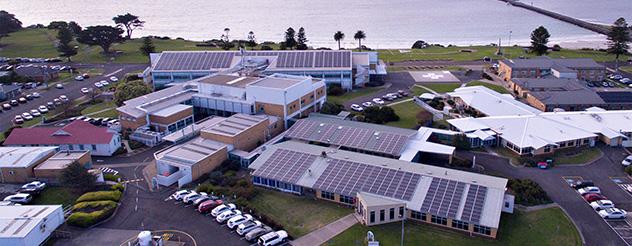Climate change is a global economic, social, environmental and public health issue. It poses significant consequences for our health and wellbeing. Climate change also poses many risks to infrastructure. We must consider these risks when locating, designing, building and maintaining assets. If the risks aren’t considered, the assets may not last as long. The costs of running the infrastructure may also increase over time.
Risks to health infrastructure from climate change include:
- inundation due to sea level rise
- riverine and inland flooding
- soil contraction shifting foundations
- extreme windstorms
- bushfire and smoke damage
- hot days and heatwaves
- legionella growth
- amplification of other pathogens and microbes.
Each of these pose risks to people’s comfort, health and lives.
The Department of Health has released a climate change adaptation action plan 2022-26. This plan details how we are embedding climate change into our health infrastructure pipeline.








